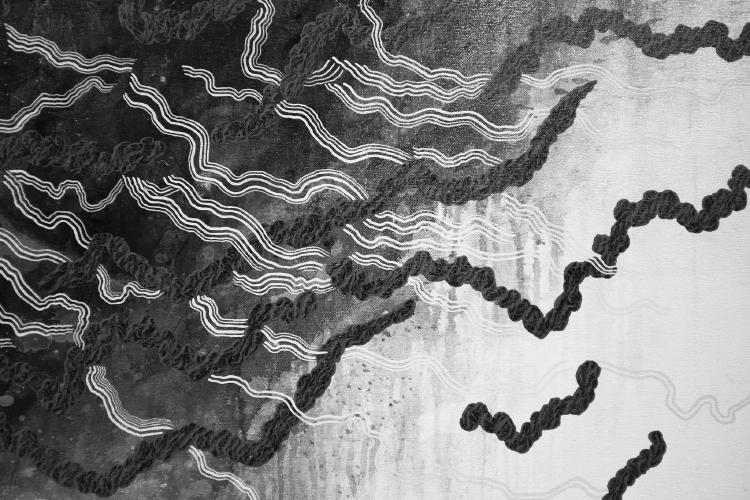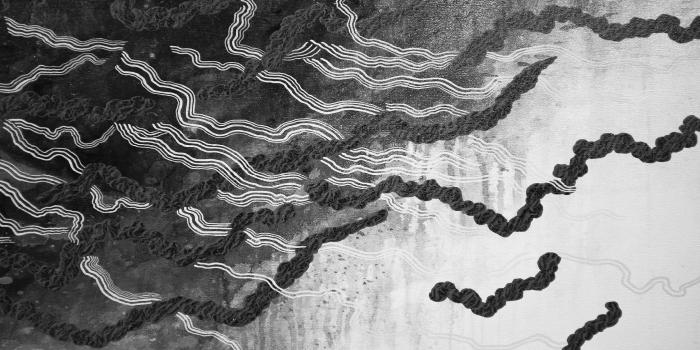梨视频高级爬取

[DeadPool爬虫]梨视频高级爬取
通过之前的梨视频初级爬取小实战,我们已经简单体会了Python写爬虫的威力,但是有没有感受到局限性?通过查看梨视频的网站,我们可以看到每个页面只加载12个短视频,因此每次爬取的视频内容量是非常不够的,所以我们要更进一步,是不是可以通过代码来实现控制页面加载更多呢?
PS: 如果您已经有爬虫相关知识了,可以直接看我的框架地址Deadpool项目
还是一样,话不多说,直接上最终代码效果~
#!/usr/bin/env python
# -*- coding: utf-8 -*-
"""
@Time : 2020/4/3 14:16
@Author : WangHuan
@Contact : hi_chengzi@126.com
@File : 2020-04-03.py
@Software: PyCharm
@description: webdriver实现页面加载新数据后抓取信息并保存
"""
import os
import re
import time
import urllib.request
import requests
from selenium import webdriver
from selenium.webdriver.common.by import By
def down_top10_techvideo():
storage = 'videos'
if storage not in os.listdir():
os.mkdir(storage)
seed_url = 'https://www.pearvideo.com/popular_8'
prefix_url = 'https://www.pearvideo.com/'
headers = {
'User-Agent': 'Mozilla/5.0 (Windows NT 6.1; Win64; x64) AppleWebKit/537.36 (KHTML, like Gecko) Chrome/80.0.3987.149 Safari/537.36'
}
# 获取前十名视频的作者
content = requests.get(seed_url, headers=headers).text
author_regex = r'<a href="(.*?)" class="column">'
author_ids = re.findall(author_regex, content)
author_url = []
for _ in author_ids:
_url = prefix_url + _
author_url.append(_url)
videos = []
driver = webdriver.Chrome(executable_path="E:\\Github\\Lesson\\chromedriver.exe")
# 进入作者页面,获取作者页面下“最新”中的所有视频
for _ in author_url:
print('-' * 60)
print(f'作者地址:{_}')
# 访问作者页面
driver.get(_)
driver.implicitly_wait(10)
temp_pagesource = driver.page_source
# 匹配视频链接
vids_regex = r'<a href="(.*?)" class="vervideo-lilink actplay" target="_blank">'
vids = re.findall(vids_regex, temp_pagesource)
# 剔除前六个热门视频
# vids = vids[6:]
for i in range(0, 6):
vids.pop(0)
for _ in vids:
_url = prefix_url + _
videos.append(_url)
i = 1
# 实现一直点击“加载更多”直到没有加载出新的内容
while videos:
print('当前队列里面有视频数量为:{0}'.format(len(videos)))
# 访问videos中的视频地址,保存对应视频文件和相关描述信息,并将已保存过的视频链接从videos中去除
videos.reverse()
while videos:
video = videos.pop()
print(video)
video_content = requests.get(video, headers=headers).text
mp4_regex = r'ldUrl="",srcUrl="(.*?)",vdoUrl='
video_url = re.findall(mp4_regex, video_content)
title_regex = r'<h1 class="video-tt">(.*?)</h1>'
video_title = re.findall(title_regex, video_content)
md5 = hashlib.md5()
md5.update(video_title[0].encode(encoding='utf-8'))
md5_title = md5.hexdigest()
print(f'正在下载视频:{video_title[0]}')
urllib.request.urlretrieve(video_url[0], os.path.join(storage, f"{md5_title}.mp4"))
sum_regex = r'<div class="summary">(.*?)</div>'
video_sum = re.findall(sum_regex, video_content)
with open(f"videos/{md5_title}.txt", 'w', encoding='utf-8') as f:
f.write(video_title[0])
f.write(video_sum[0])
# 在作者页面点击“加载更多”,获取更多视频信息
driver.find_element(By.ID, "listLoadMore").click()
print(f'点击“加载更多” {i} 次')
i += 1
time.sleep(3)
# 重新获取页面内容
new_pagesource = driver.page_source
# 获取新的vids
new_vids = re.findall(vids_regex, new_pagesource)
old_vids = re.findall(vids_regex, temp_pagesource)
vids = (vid for vid in new_vids if vid not in old_vids)
# 当没有新vids时,跳出循环
if vids:
temp_pagesource = new_pagesource
for v in vids:
_url = prefix_url + v
videos.append(_url)
else:
break
if __name__ == '__main__':
down_top10_techvideo()
虽然这次的代码里面混杂了一些还没有涉及的内容,但是先为了咱们的目标"不择手段",以实现目标为最终目标,后续会介绍selenium的相关知识~
接下来还是一样的,代码解读时间,不过这次我们只讲解一些有差别的地方
===
这段代码是获取视频排行榜页面中的排名前十的作者地址
# 获取前十名视频的作者
content = requests.get(seed_url, headers=headers).text
author_regex = r'<a href="(.*?)" class="column">'
author_ids = re.findall(author_regex, content)
author_url = []
for _ in author_ids:
_url = prefix_url + _
author_url.append(_url)
===
这段代码是启动一个Chromedriver来打开浏览器进行页面访问
driver = webdriver.Chrome(executable_path="E:\\Github\\Lesson\\chromedriver.exe")
===
这段代码同上一个课程里面的最后的实战练习一样,将视频以MD5.mp4的形式进行保存,同时用一个MD5.txt的文件记录视频的相关信息
md5 = hashlib.md5()
md5.update(video_title[0].encode(encoding='utf-8'))
md5_title = md5.hexdigest()
print(f'正在下载视频:{video_title[0]}')
urllib.request.urlretrieve(video_url[0], os.path.join(storage, f"{md5_title}.mp4"))
sum_regex = r'<div class="summary">(.*?)</div>'
video_sum = re.findall(sum_regex, video_content)
with open(f"videos/{md5_title}.txt", 'w', encoding='utf-8') as f:
f.write(video_title[0])
f.write(video_sum[0])
===
因为我们是通过chrome浏览器打开的页面,所以我们可以通过chrome来触发点击动作
# 在作者页面点击“加载更多”,获取更多视频信息
driver.find_element(By.ID, "listLoadMore").click()
print(f'点击“加载更多” {i} 次')
i += 1
time.sleep(3)
===
这段代码是我们进行加载前后的两次内容对比,通过找到的链接列表来进行比对,找到新增的视频链接
# 重新获取页面内容
new_pagesource = driver.page_source
# 获取新的vids
new_vids = re.findall(vids_regex, new_pagesource)
old_vids = re.findall(vids_regex, temp_pagesource)
vids = (vid for vid in new_vids if vid not in old_vids)
===
最后当我们判断没有新增链接之后,就可以得知,该视频作者的所有短视频都爬取完毕了
# 当没有新vids时,跳出循环
if vids:
temp_pagesource = new_pagesource
for v in vids:
_url = prefix_url + v
videos.append(_url)
else:
break
代码链接来自我女朋友的Github-2020-04-07
实战练习
通过上面的更高级一点的代码爬取的实战例子,我们再拔高一点?正好通过拔高例子的过程,再次巩固我们的代码实践能力~
目标是: 通过一定的构建逻辑,将上面的实践代码例子,重构成一个可以复用的类对象
这里的重构代码由我亲自操刀
#!/usr/bin/env python
# -*- coding: utf-8 -*-
"""
@Time : 2020/4/7 10:26
@Author : WangHuan
@Contact : hi_chengzi@126.com
@File : 2020-04-07.py
@Software: PyCharm
@description: 在梨视频科技排行榜中获取前十名视频的对应作者的全部视频内容
"""
import re
import os
import time
import requests
import hashlib
import urllib.request
from selenium import webdriver
from selenium.webdriver.common.by import By
class PearVideoSpider(object):
""" 爬取梨视频分类中排行榜前十名视频作者的所有视频内容 """
def __init__(self, seed):
self.seed = seed
self.prefix = "https://www.pearvideo.com/"
self.temp_pagesource = ""
self.finish_video_urls = set()
self.storage = 'videos'
self.headers = {
'User-Agent': 'Mozilla/5.0 (Windows NT 6.1; Win64; x64) AppleWebKit/537.36 (KHTML, like Gecko) Chrome/80.0.3987.149 Safari/537.36'
}
self.author_urls = set()
self._setup_dirver()
def _setup_dirver(self):
""" 加载谷歌浏览器内核并进行配置 """
self.driver = webdriver.Chrome(executable_path="E:\\Github\\Lesson\\chromedriver.exe")
def _click_more(self, elementid):
""" 加载更多 """
self.driver.find_element(By.ID, elementid).click()
time.sleep(3)
def setup_storage(self):
""" 创建视频存储路径 """
if self.storage not in os.listdir():
os.mkdir(self.storage)
def get_top10_creator(self, regex):
""" 获取前十名视频的作者 """
content = requests.get(self.seed, headers=self.headers).text
author_ids = re.findall(regex, content)
for _ in author_ids:
_url = self.prefix + _
self.author_urls.add(_url)
def find_video_urls(self, pagesource):
""" 查找页面里面视频的链接地址 """
# 匹配视频链接
videos = []
vids_regex = r'<a href="(.*?)" class="vervideo-lilink actplay" target="_blank">'
vids = re.findall(vids_regex, pagesource)
for _ in vids:
_url = self.prefix + _
videos.append(_url)
videos.reverse()
return videos
def download_video(self, item):
""" 下载每一个视频并进行存储 """
video_content = requests.get(item, headers=self.headers).text
mp4_regex = r'ldUrl="",srcUrl="(.*?)",vdoUrl='
video_url = re.findall(mp4_regex, video_content)
title_regex = r'<h1 class="video-tt">(.*?)</h1>'
video_title = re.findall(title_regex, video_content)
md5 = hashlib.md5()
md5.update(video_title[0].encode(encoding='utf-8'))
md5_title = md5.hexdigest()
print(f'正在下载视频:{video_title[0]}')
urllib.request.urlretrieve(video_url[0], os.path.join(self.storage, f"{md5_title}.mp4"))
sum_regex = r'<div class="summary">(.*?)</div>'
video_sum = re.findall(sum_regex, video_content)
with open(f"{self.storage}/{md5_title}.txt", 'w', encoding='utf-8') as f:
f.write(video_title[0])
f.write(video_sum[0])
def run(self):
self.setup_storage()
self.get_top10_creator(regex=r'<a href="(.*?)" class="column">')
# 进入作者页面,获取作者页面下“最新”中的所有视频
print(f'当前类别视频排名前十的视频作者有{len(self.author_urls)}个')
for _ in self.author_urls:
print('-' * 60)
print(f'作者地址:{_}')
# 访问作者页面
self.driver.get(_)
self.driver.implicitly_wait(10)
self.temp_pagesource = self.driver.page_source
# 匹配视频链接
videos = self.find_video_urls(pagesource=self.temp_pagesource)
videos = videos[:-6]
i = 1
# 实现一直点击“加载更多”直到没有加载出新的内容
while videos:
print(f'当前队列里面有视频数量为: {len(videos)}')
# 访问videos中的视频地址,保存对应视频文件和相关描述信息,并将已保存过的视频链接从videos中去除
while videos:
video = videos.pop()
print(f'当前爬取的视频地址: {video}')
self.download_video(video)
# 在作者页面点击“加载更多”,获取更多视频信息
print(f'点击“加载更多” {i} 次')
self._click_more("listLoadMore")
i += 1
# 重新获取页面内容
new_pagesource = self.driver.page_source
# 获取新的vids
new_vids = self.find_video_urls(new_pagesource)
old_vids = self.find_video_urls(self.temp_pagesource)
vids = (vid for vid in new_vids if vid not in old_vids)
# 当没有新vids时,跳出循环
if vids:
temp_pagesource = new_pagesource
videos = vids
else:
break
